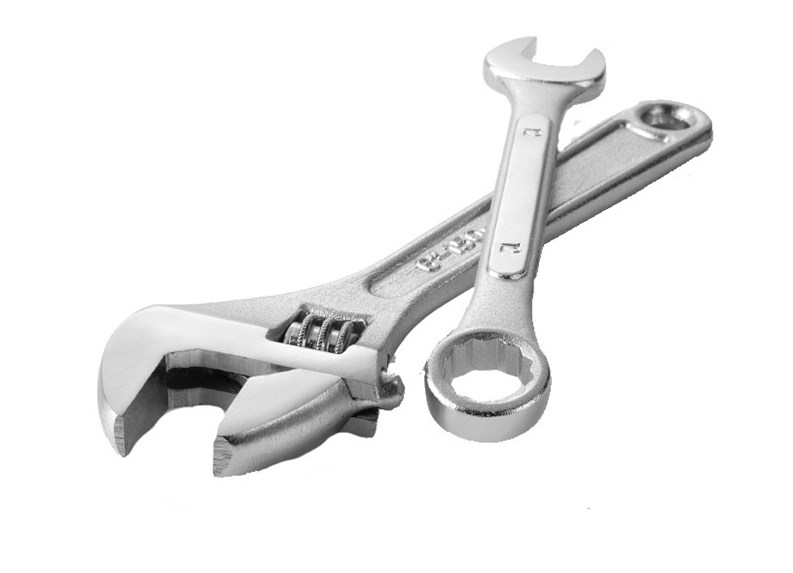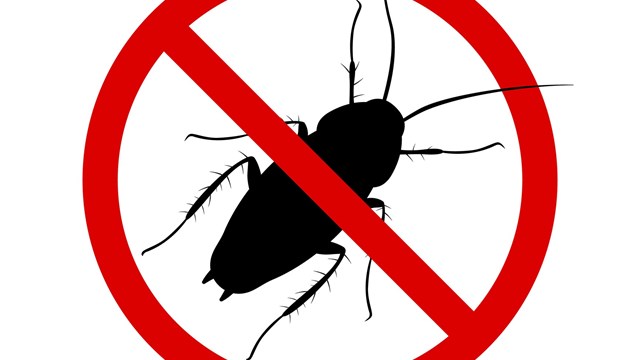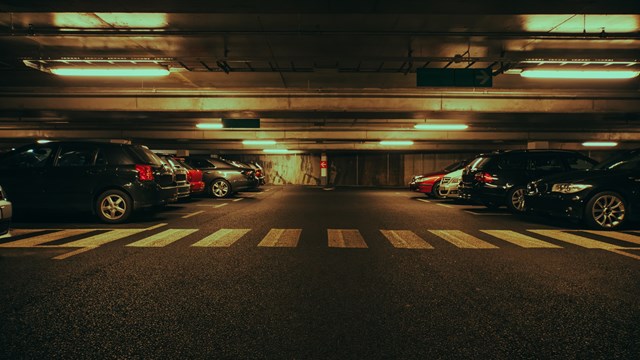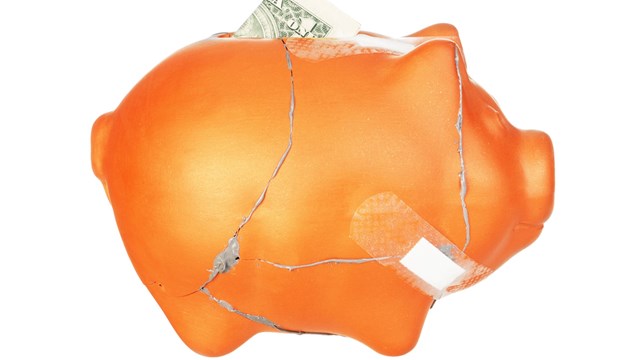On April 5, David Letterman joked that the drought threatening the Northeast is so severe that New Yorkers can't even get a moist towelette at Kentucky Fried Chicken. While the water shortage hasn't yet impacted the city's population to quite that extent, co-op and condo residents are being called upon to conserve water in preparation for a summer that will likely be characterized by a sustained drought.
Citing the critical lack of rainfall over New York City's three reservoir systems - the Croton, Catskill, and Delaware systems - which include 19 reservoirs and have a collective storage capacity of 588 billion gallons, Mayor Michael R. Bloomberg declared a Stage 1 Drought Emergency on April 1. The announcement was the third step in the drought declaration process that began on December 26, 2001, when a Drought Watch was put into effect. A watch is declared when there is less than a 50 percent chance that the Catskill and Delaware water supply systems - the two largest - would reach full capacity by June 1.
When the situation worsened, Bloomberg declared a Drought Warning on January 27, based on a less-than 33 percent chance that the two systems would refill by June. As of April 11, the reservoirs were at 60.8 percent capacity. To put the situation into perspective, the normal level is 96.8 percent.
A Stage 1 emergency involves the implementation of increasingly stringent measures to reduce water consumption should the drought continue. As of April 1, the city' s residents were prohibited from washing vehicles and sidewalks; watering of lawns is restricted from 7 a.m. to 9 a.m., and from 7 p.m. to 9 p.m. for even-numbered addresses on even days and for odd-numbered addresses on odd days; golf courses may water only tees and greens; and ornamental fountains must be turned off. During all stages of a drought emergency, SAVE WATER signs must be posted in all buildings except residential properties under five units.
Property managers are doing their best to take the DEP's water-saving parameters to heart. According to Daniel Wollman, chief operating officer at the Gumley-Haft Real Estate management firm in Manhattan, "We have advised all of our residents to save water in accordance with what the city of New York has asked us to do. Some buildings put in water restrictors in showers [but it's not something we require]: My firm manages predominately co-ops and condominiums so really"¦ that would have to be something that a board promulgated among its residents. Some buildings - typically rental buildings - have gone to those types of things [low-flow shower heads and low consumption toilets]. In the co-op and condos that I generally manage, we've stopped washing the sidewalks as frequently."
While refraining from washing vehicles and sidewalks and limiting lawn watering are important considerations, one basic step can do more to curb the local water shortage than almost anything else.
"Basic leak detection is the number one thing," says Hershel Weiss, an engineer and licensed plumber at Ashokan Water Services in Brooklyn. According to the Department of Environmental Protection (DEP), the official water utility for the city of New York, a slow drip from a leaking faucet wastes 15 to 20 gallons of water every day. That's as much as 7,300 gallons per year.
The DEP offers a residential water survey program that provides free leak surveys for large multifamily buildings. A contractor is sent to the building to inspect the flow rates on showerheads, to check for toilet leaks, and so on. A written report and a checklist are left with the resident and a summary letter is sent to the owner of the building or co-op board. Water-saving kits are also available from the DEP free of charge.
"In apartment buildings, the largest single source of leaks is the toilet," says Warren C. Liebold, director of technical services and conservation at the DEP. "I don' t think we've ever gone into a residential building that had high water consumption problems where toilet leaks weren't a big player."
A toilet leak that cannot be heard - or seen as ripples in the water in the toilet bowl - can be detected by putting food coloring or vegetable dye in the toilet tank. If the dye shows up in the bowl before flushing, you have a leak. "It's very mundane," says Liebold, "But we' re talking about tens or even hundreds of gallons a day, depending on how serious the toilet leak is."
While individual building managers and staff members are doing what they can to improve water conservation in their physical plants and encourage residents to be frugal with water, some are running into an unforeseen difficulty: steps taken in past dry years are making these new requirements tough to implement.
According to some property managers, there may come a point past which there's not much more they can do. When the last citywide water shortage occurred in 1995, many property managers received financial help from the city to defray the cost of installing more efficient showerheads and smaller toilet tanks in their properties. Water wasting was reduced dramatically, but, say managers, you can only reduce water usage so much before showers are reduced to a trickle.
Bart McDade, director of operations for New York at Grubb & Ellis Management Services, Inc. in Manhattan is finding himself and his rental properties in just this predicament. "We've put up the notices that are required by law at each property, and we cut all watering of grass areas and lawn areas - so that's been curtailed," he says. "Of course we aren't washing the sidewalks or anything like that. Our problem with trying to preserve or cut back [water consumption] in the apartments is that "¦ during the last drought [in 1995], we took advantage of a city offer to install low-flow showerheads, and also took the rebates on the 1.5-gallon toilets. We replaced several thousand of them. So we cut back then, and at this point, there is very little we can do to cut back in the apartments themselves because we're down to what we consider a fairly small flow right now. We don't have too many areas that we can curtail."
McDade isn't being critical - just practical. "There isn't much more we can do on those properties that we manage because we did take advantage - it was a great advantage because the city paid for the toilet installations - so we've done that."
The water problem isn't just centered in the concrete jungle, however. After all, how much water does a 12-unit co-op on the East Side with one tree out front and no lawn really use? Some inner-city residents and property managers feel that it's the big suburban developments that are the more logical target for the water conservation message. Landscaping, lawns, and swimming pools, for example, require huge amounts of water to maintain.
Says Wollman, "There aren't that many functions at the building level that are done that actually require water: cleaning the sidewalks, watering the plants. We've put up all the signs and we've sent out literature to all of our residents indicating the things that the city is promulgating. In Manhattan, there are certain things you can do, but there is clearly not as much as in the suburbs where you're managing and involved in buildings that are more spread out, homeowners associations and things like that. You tend to get into a lot more water situations [with] buildings that have swimming pools, buildings that have large exterior grounds where they have plantings, lots of lawns, or homeowners who are on ten acres of land. Their water requirements are far greater than they are at the building level."
The restrictions imposed during the drought emergency are enforced by the DEP and the NYPD in New York City and by local authorities in the four upstate counties that receive water from the reservoirs - Westchester, Putnam, Ulster, and Orange counties.
Liebold says enforcement is currently focused on car washing, street washing, illegal water hydrant use, and other obvious, public water waste. As the drought continues, enforcement will be heightened. According to Liebold, "This doesn't work if you don't get a lot of voluntary compliance."
Non-compliance isn't just wasteful - it's criminal, and punishable by law. According to a recent report in the New York Post, more than 300 New Yorkers have been busted for wasting water since the emergency was announced. Fines ranging from $100 to $1,000 have been levied against individuals for running ornamental fountains, hosing off their cars, and opening fire hydrants.
When Bloomberg announced the Stage 1 Drought Emergency, he pointed out the effectiveness of simple conservation. "When push comes to shove," said the Mayor, "people realize they've got to be helpful, and to a great extent, they are. Proof of public conservation has already been observed: Water consumption was down in March and early April. New Yorkers have heeded our requests for conservation over these past months seriously - we've seen our water use cut by some 30 million gallons a day."
But conservation alone won't prevent a drought emergency: We need rain. According to the National Weather Service Climate Prediction Center, the overall outlook for the East Coast is one of sluggish improvement: "Accumulating enough rain to bring reservoirs and groundwater levels up to normal following the severe precipitation deficits incurred since September is unlikely," read the Center's report. "Precipitation departures from normal during September 1, 2001 to March 13, 2002 exceed 12 inches from northeastern Virginia through Delaware, southern New Jersey, and into Connecticut. This is about one-half of normal."
With such a gloomy prediction, it can come as no surprise that the city is facing water restrictions, but the current water shortage isn't a typical emergency with immediate consequences. This type of emergency is marked by far-sighted warnings that are addressed with long-term planning.
"The reservoirs are not going to go dry in the next few months; they're not going to go dry in the next year," Liebold says, "But if we continue having much less rain and snow than normal, we can get to a point where the reservoir levels get so low that the water quality is not what it should be, and you have to have emergency sources at your disposal."
Watering your lawn during certain hours seems a minor restriction, but if the drought continues, the emergency could get upgraded to a Stage 2, in which case the watering of lawns would be prohibited altogether, and stricter rationing might be imposed. Officials from the DEP will meet throughout the summer to determine whether an upgrade in the drought emergency is warranted. "In a sense, you call a drought emergency in part to avoid having to do the things that are true emergency measures - pushing the red button as it were," says Liebold. One of those emergency measures is operating the Chelsea Pumping Station, which would, in effect, take water directly from the Hudson River. The city would only consider such a drastic measure during a Stage 3 Drought Emergency. New York has never declared a Stage 4.
During the 1980s, New York City endured three drought emergencies. One of them lasted two years (from 1980 to 1982), and two of them reached Stage 3 (in 1985 and 1989). During the same decade, however, New York was actually consuming more water than today. According to the DEP, the city used an average of 1.3 billion gallons of water per day in 1981: in 2001, just 1.1 billion gallons per day. Liebold says that's an important factor when considering the capacity of the city's reservoirs and the basis of the city's drought declaration process.
"We don't need the reservoirs to be 100 percent full by June 1," he says. "The 100 percent was based on a time when we were using 20 percent more water than we're using today. But the fact that the reservoirs are at 60 percent when they are normally at 90 percent is cause for concern, and the restrictions imposed during the drought emergency, together with public conservation and leak detection, are crucial steps in protecting the city's water supply."
So, unless the heavens open and visit a freak East Coast monsoon on the city in the coming weeks, it may be a very long, dry summer. In the meantime, the DEP and other conservation agencies recommend that residents in and around New York City take a few simple steps to stave off serious problems as the weather really heats up:
"¢ Wait to run dishwashers and do laundry until a full load is ready to go
"¢ Limit yourself to one brief shower a day
"¢ Don't let water run while washing dishes or brushing teeth
"¢ Take showers instead of baths
For more information about drought restrictions and water conservation, contact the Department of Environmental Protection at (718) DEP-HELP or visit the Web site at www.nyc.gov/dep.







Leave a Comment